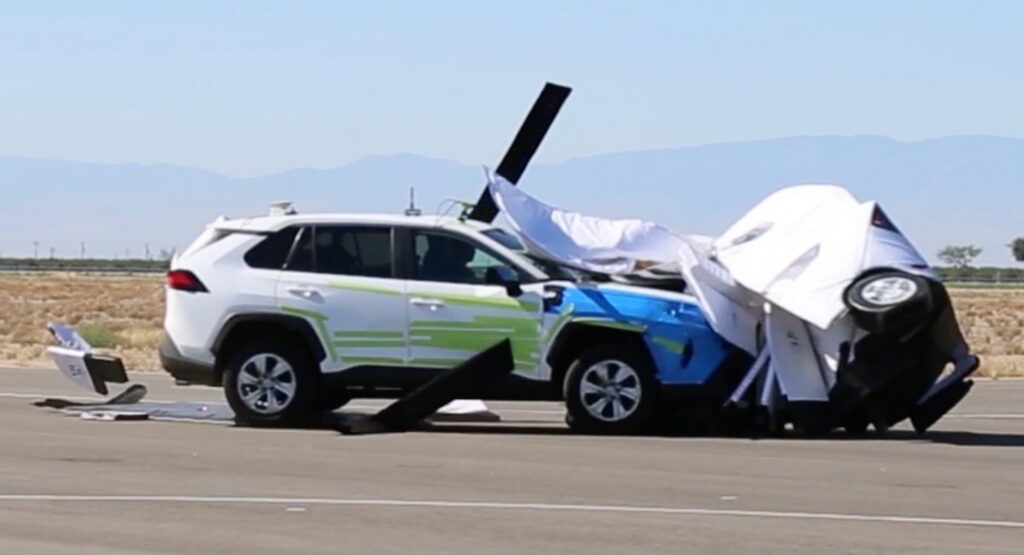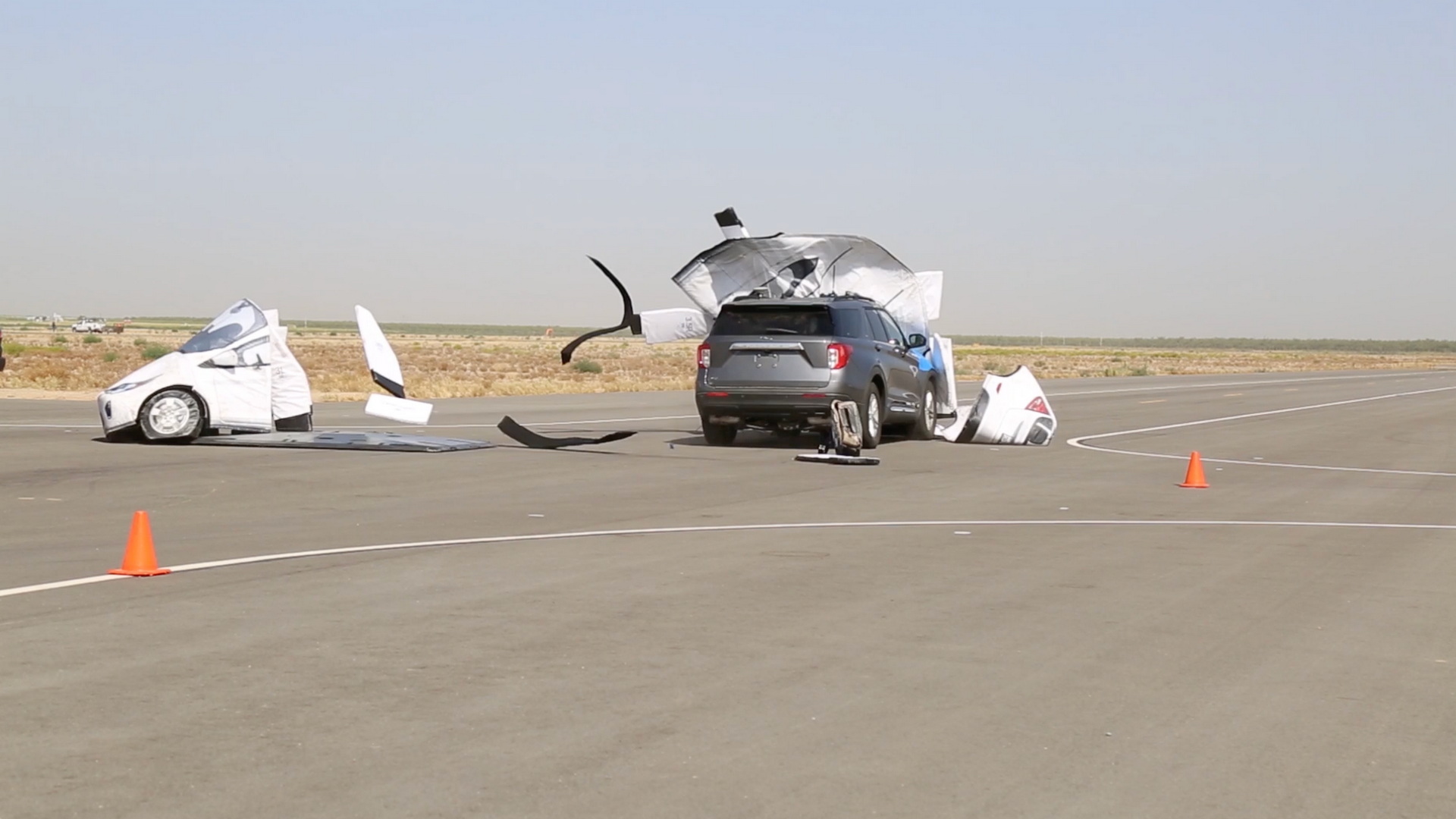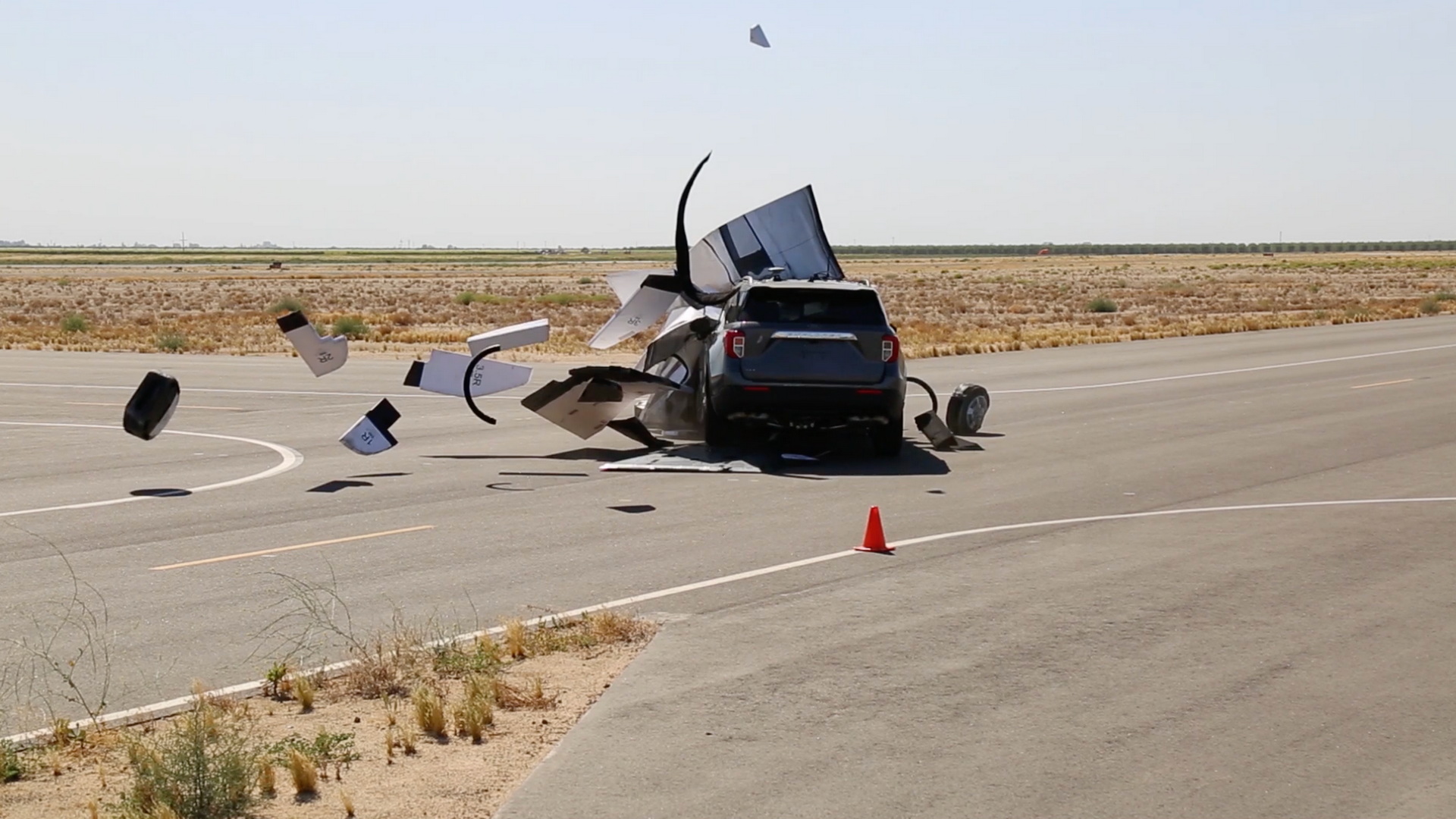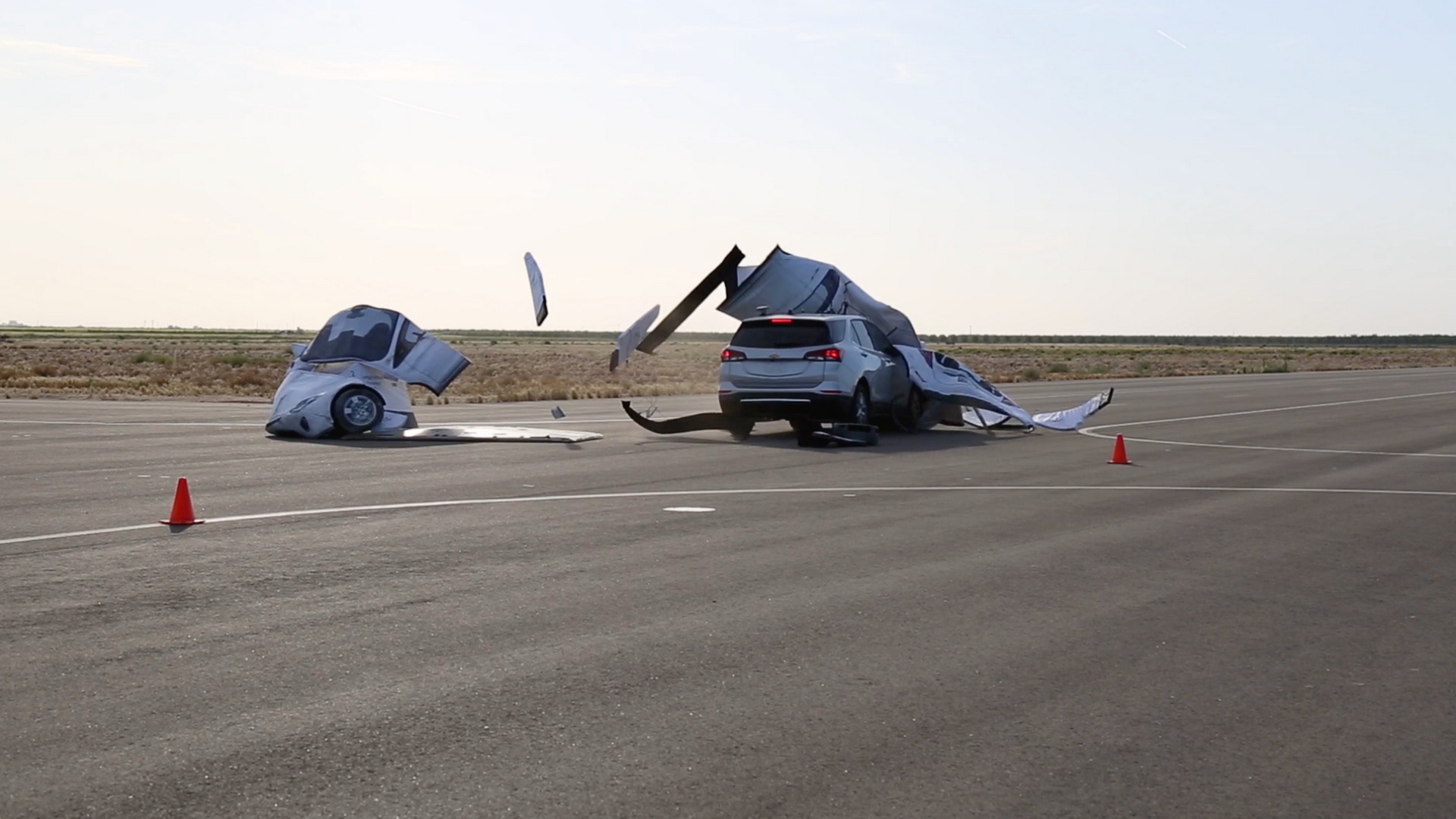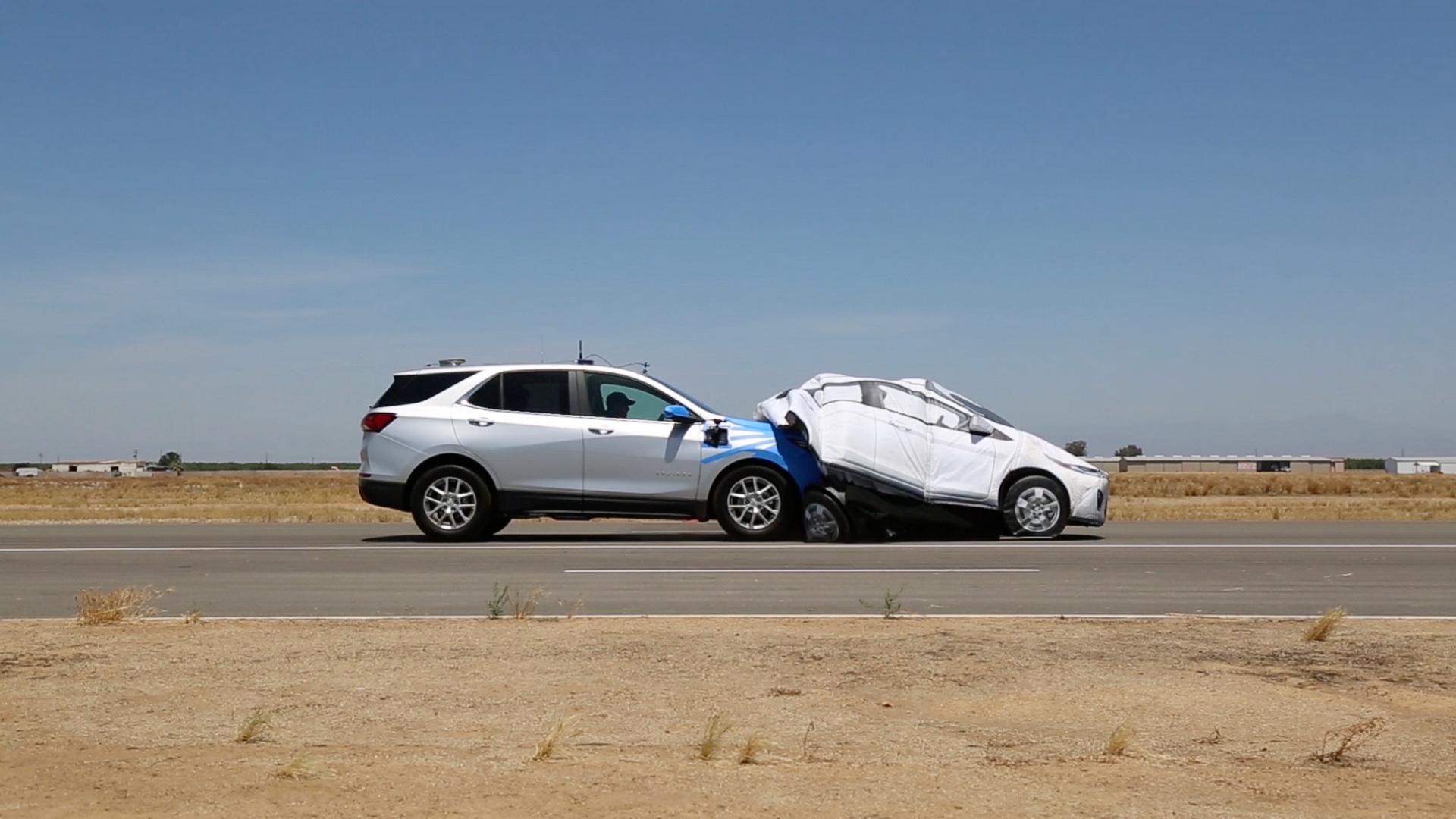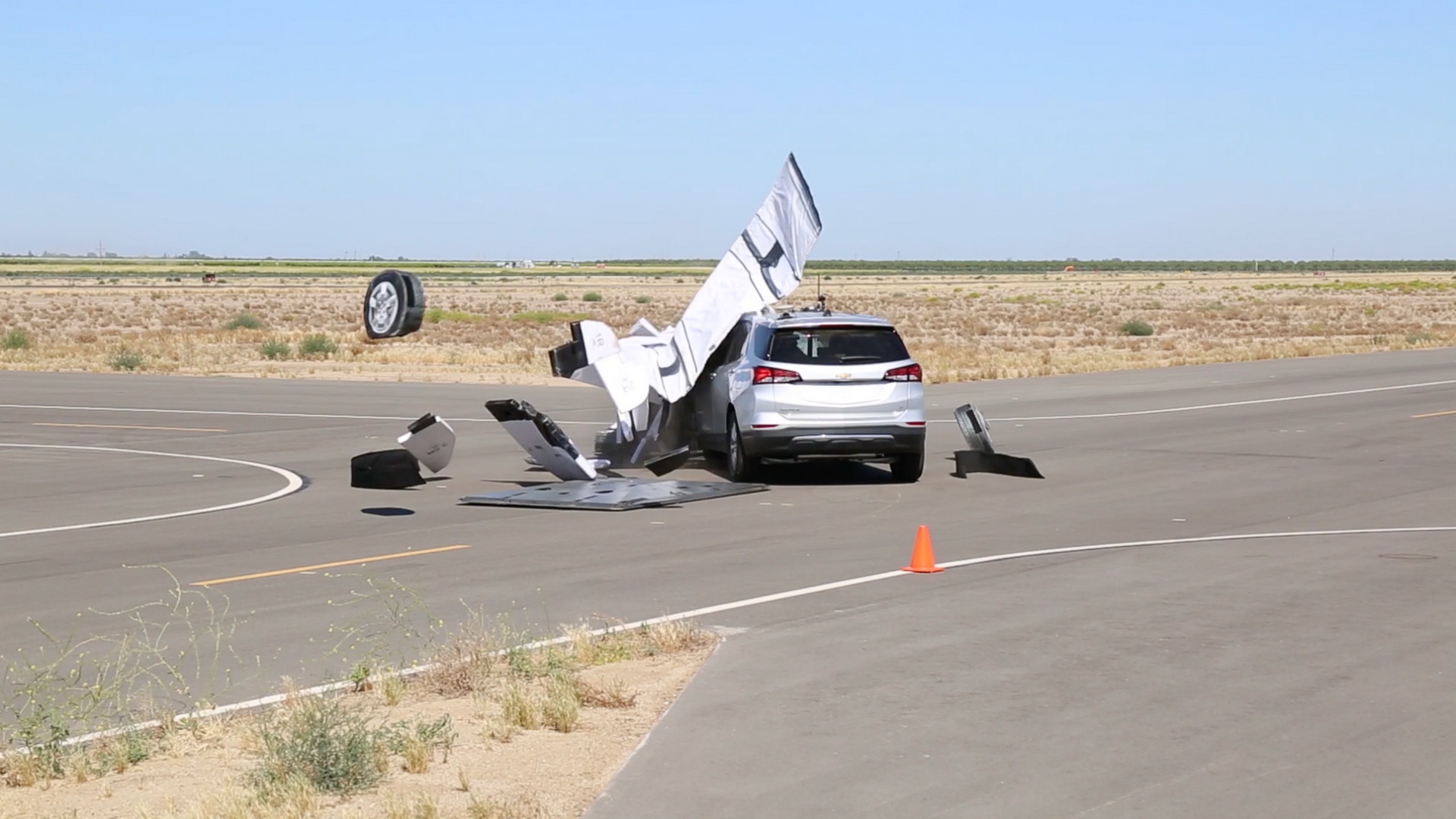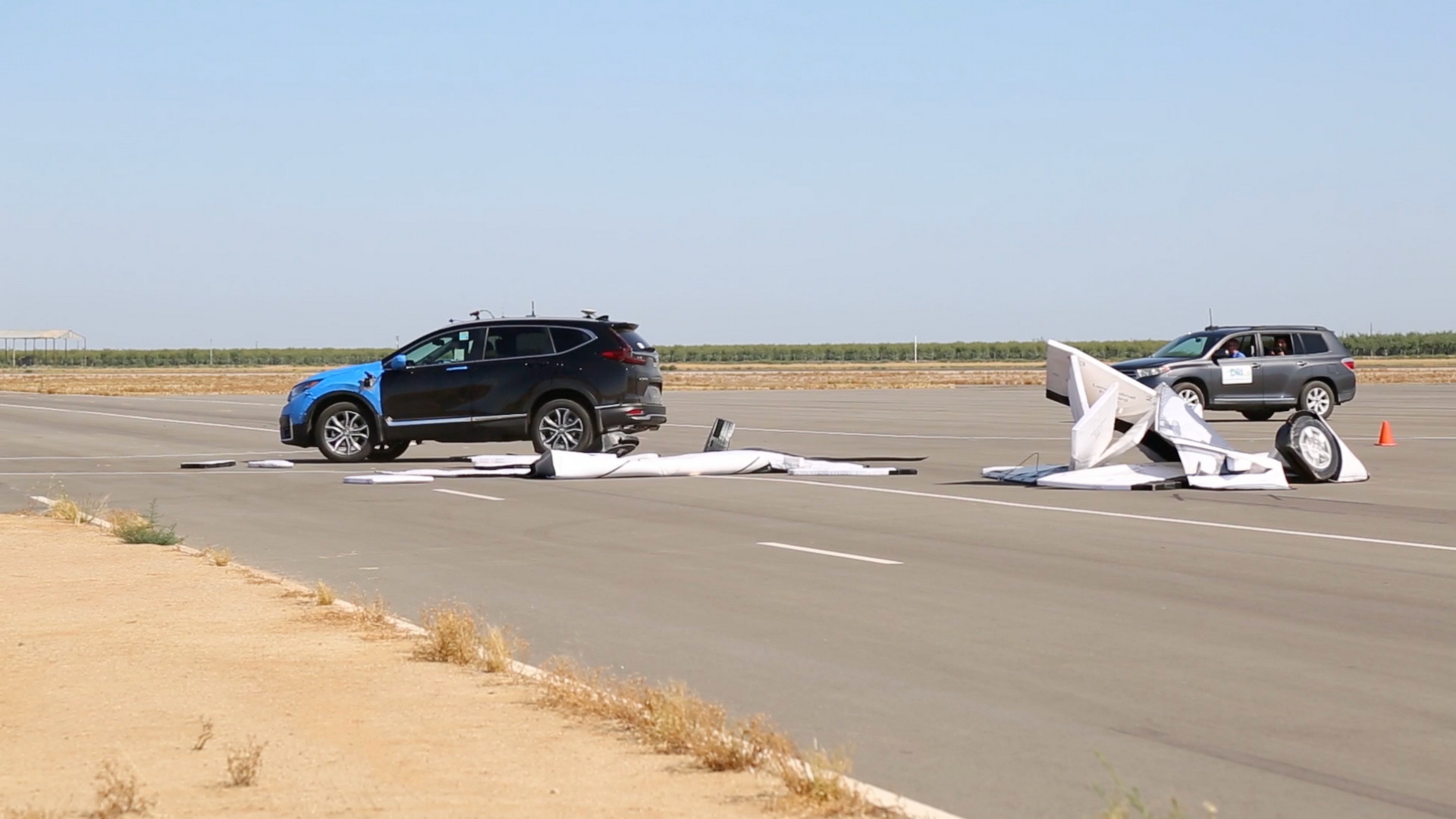Most new vehicles sold in the United States these days are fitted with an Automatic Emergency Braking (AEB) system as standard. In fact, 20 major carmakers representing “more than 99 percent” of the American auto market agreed to make AEB standard on all of their cars from September 2022.
And while the technology that utilizes radar, cameras, or LiDAR to spot threatening situations on the road has proven its worth in reducing rear-end collisions, the American Automobile Association (AAA) wanted to learn how these systems perform in higher-speed scenarios where they may be most useful. What they found after a series of crash tests is that these systems struggle or fail to help in any but the most basic of circumstances.
AAA tested the systems in four vehicles (from Ford, Honda, Chevrolet, and Toyota) at higher speeds to see if they could prevent a rear-end collision when it was likely to cause more damage, and also ran tests to determine whether the AEB systems could prevent a T-bone crash at an intersection.
Read Also: IIHS Makes AEB Test Harder To Better Reflect Real-World Scenarios
The organization tested the systems in two T-bone scenarios, with the vehicles going straight through the intersection coming upon a vehicle crossing their path, and as the left turning vehicle driving into the path of an oncoming vehicle. These are the deadliest types of accidents in America and account for 39.2 percent of total fatalities in crashes involving two passenger vehicles during which the striking vehicle didn’t leave the roadway or lose traction. But the results weren’t inspiring:
-
At 30 mph, AEB prevented a rear-end collision for 17 of 20 test runs, or 85%. For the test runs that resulted in a crash, the impact speed was reduced by 86%.
-
But at 40 mph, AEB only prevented a rear-end crash in 6 of 20 test runs, or 30%. For test runs that resulted in a crash, the impact speed was reduced by 62%.
-
In both the T-bone and left-turn in front of oncoming vehicle tests, crashes occurred 100% of the time. AEB failed to alert the driver, slow the vehicle’s speed and avoid the crash.
As a result of its testing, AAA recommends that automakers focus on designing their systems to better handle crashes in which injuries and fatalities are the likeliest to occur. Drivers should also be aware of the limitations of their vehicles.
“Automatic Emergency Braking does well at tackling the limited task it was designed to do. Unfortunately, that task was drawn up years ago, and regulator’s slow-speed crash standards haven’t evolved,” said Greg Brannon, director of AAA’s automotive engineering and industry relations. “Testing requirements for this technology, or any vehicle safety system for that matter, must be updated to handle faster, more realistic speeds and scenarios with the greatest safety benefit for drivers.”




